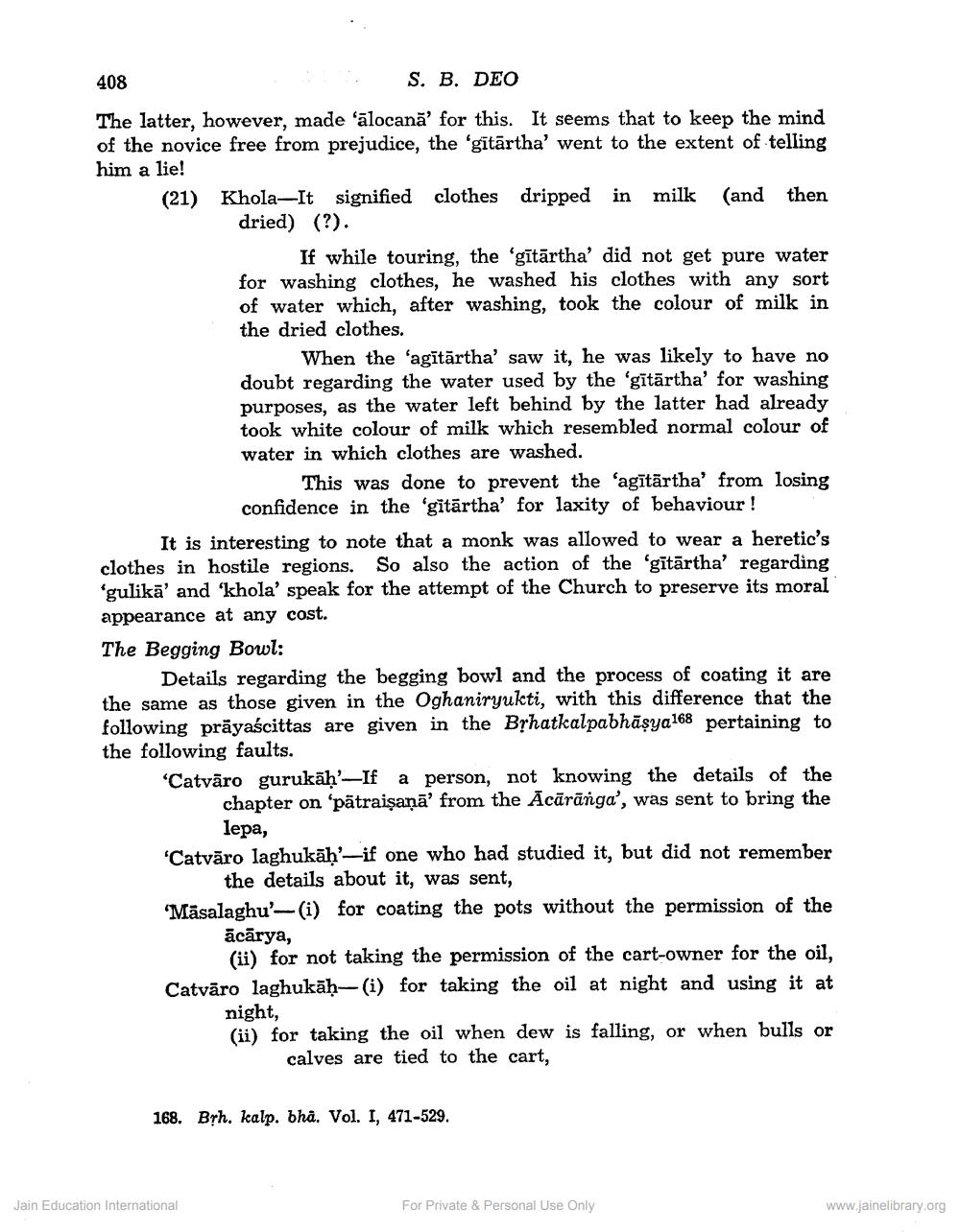________________
408
S. B. DEO The latter, however, made 'ālocanā' for this. It seems that to keep the mind of the novice free from prejudice, the 'gītārtha' went to the extent of telling him a lie! (21) Khola-It signified clothes dripped in milk (and then
dried) (?).
If while touring, the 'gītārtha' did not get pure water for washing clothes, he washed his clothes with any sort of water which, after washing, took the colour of milk in the dried clothes.
When the 'agitārtha' saw it, he was likely to have no doubt regarding the water used by the 'gītārtha' for washing purposes, as the water left behind by the latter had already took white colour of milk which resembled normal colour of water in which clothes are washed.
This was done to prevent the 'agītārtha' from losing confidence in the 'gitārtha' for laxity of behaviour ! It is interesting to note that a monk was allowed to wear a heretic's clothes in hostile regions. So also the action of the 'gītārtha' regarding ‘gulikā' and 'khola' speak for the attempt of the Church to preserve its moral appearance at any cost. The Begging Bowl:
Details regarding the begging bowl and the process of coating it are the same as those given in the Oghaniryukti, with this difference that the following prāyaścittas are given in the Brhatkalpabhāşya168 pertaining to the following faults. ‘Catvāro gurukāḥ-If a person, not knowing the details of the
chapter on 'pātraişanā' from the Ācārānga', was sent to bring the
lepa, 'Catvāro laghukāh'-if one who had studied it, but did not remember
the details about it, was sent, 'Māsalaghu'-(i) for coating the pots without the permission of the
ācārya,
(ii) for not taking the permission of the cart-owner for the oil, Catvāro laghukāḥ-(i) for taking the oil at night and using it at
night, (ii) for taking the oil when dew is falling, or when bulls or
calves are tied to the cart,
168. Byh. kalp. bha. Vol. I, 471-529.
Jain Education International
For Private & Personal Use Only
www.jainelibrary.org




